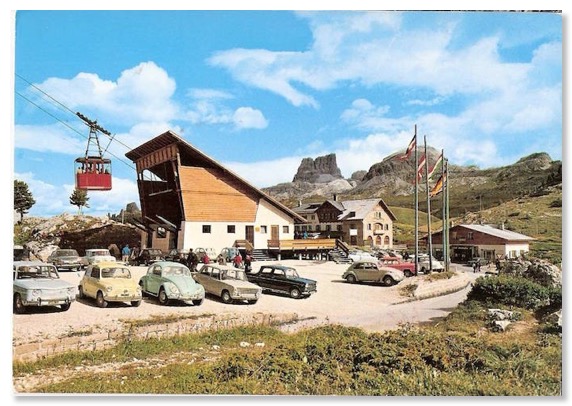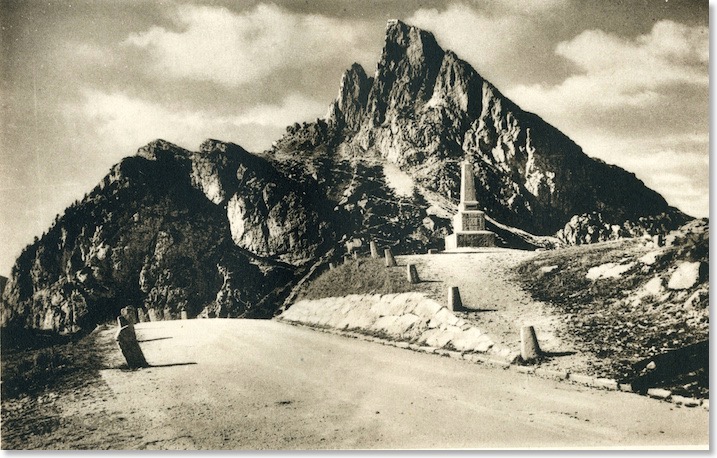
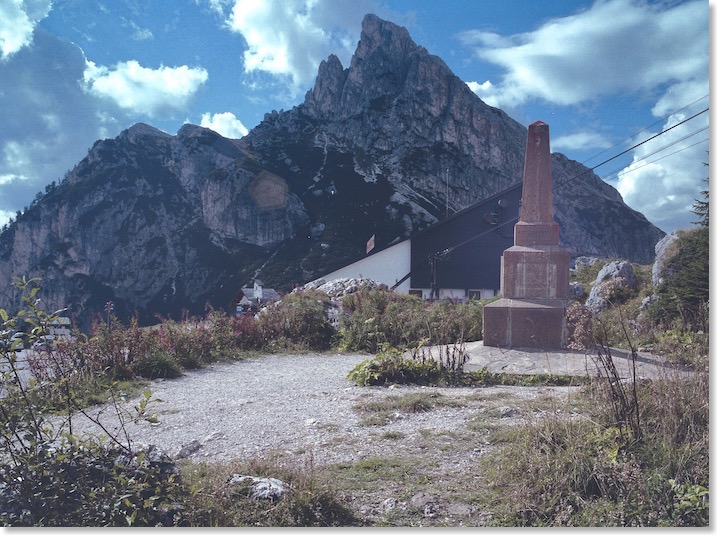
There is more on this page about the Falzarego war memorial.
Both of the Zardini guides contain this same photograph. The prominent pyramid of the Sasso di Stria and the alignment of its subsidiary tops ought make this a straightforward photo to emulate. However, as mentioned in the details for Photo 26, this area underwent many changes after the First World War and subsequently, as roads were improved and the cluster of buildings at the head of the Falzarego Pass were established. My own photograph is as close an approximation of the main elements as can be obtained on the ground nowadays of the shot Zardini took. It is no longer possible, because of buildings, to get a clear view further away from the obelisk nor to line it up with the mountain summit as per Zardini’s photo, and I believe that it will at some time have been moved back from The Road and away from the encroachment of the car-park excavations.
This is an early Ghedina postcard, very similar to the view Zardini shot, likely to date from some the early years of the 1920s. It is not dated and was never posted. This dating is based on the fact that the white marble plaque had not yet been added to the memorial:
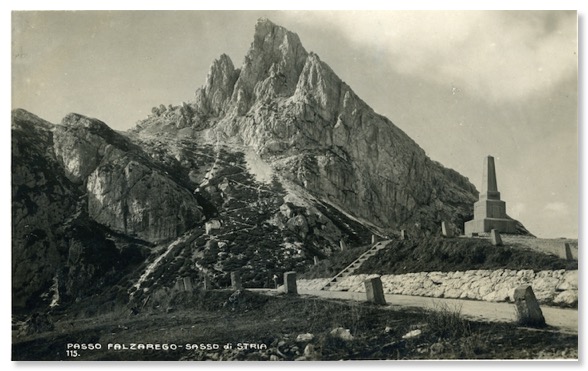
It is interesting to note that in both the Zardini and Ghedina photos, there is no metal embellishment on the obelisk. See below for more about this. There is such adornment on the memorial in this hand-coloured postcard from some time in the 1920s, although I wonder how much was artistic licence:
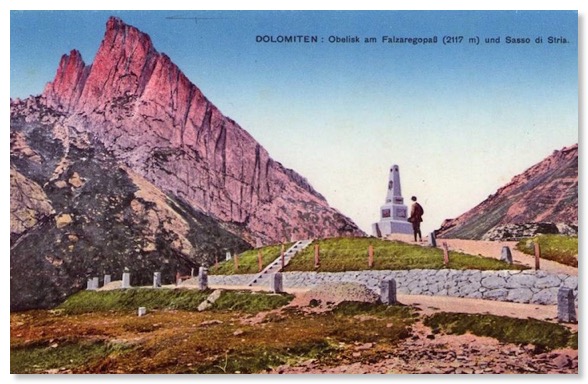
The same goes for the appearance of panels on the monument in this painted representation, also from the 1920s:
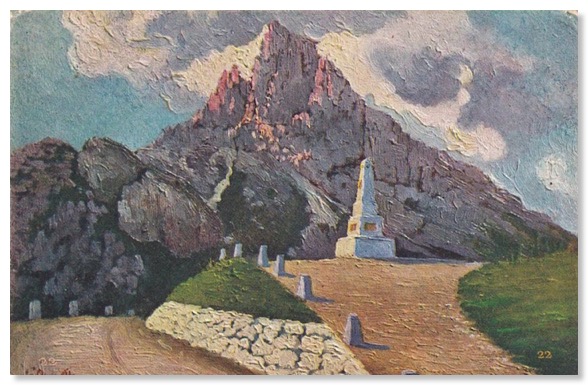
The clothing in these next two postcard photos helps date them to the 1920s, even in the absence of other evidence. It also appears to me that the war memorial has been drilled to accept four bolts where the marble plaque is nowadays. There also seem to be other drilled holes, which can be seen in the closer photos of the obelisk under Photo 26. In the absence of any other dating evidence - neither card was ever posted - I wonder whether these photographs commemorate the installation of the plaque and metal adornment? Were they, say, from 1926, they could be from an event at which veterans celebrated the tenth anniversary of the fighting on Cima Lagazuoi, behind the monument, and would be a year after date of the quote from climber Guido Rey that appears on the plaque.
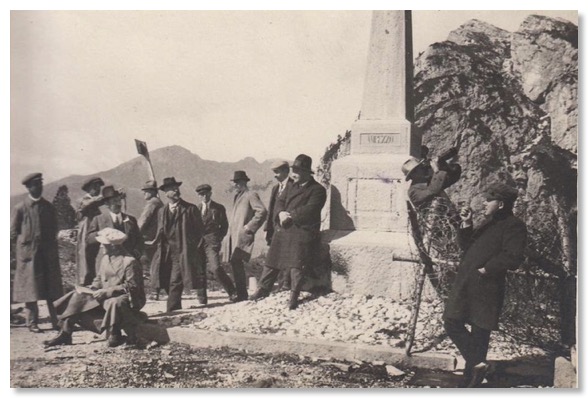
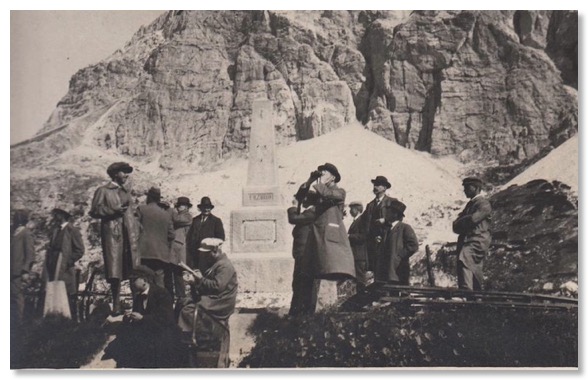
Note the pipe-smoking figure on the right in the first photo above is leaning against the remnants of a WWI barbed wire barrier.
This next photo, dated 29 June 1936, also shows a group around a memorial said to be at Passo Falzarego. It is a different memorial and different marble panel. Might it be a 20th anniversary event for veterans of the fighting, and ten years after the one shown above?:
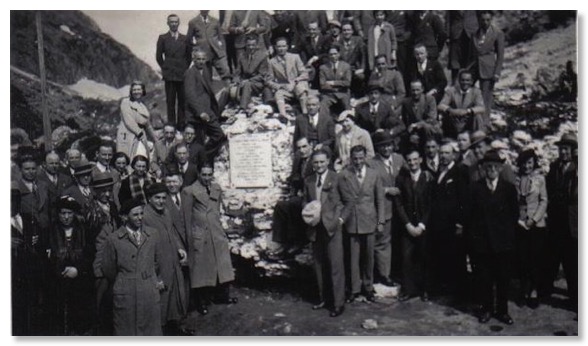
I was unaware of a second memorial tablet at the head of the Falzarego pass nowadays, but further research unearthed this Ghedina postcard, hand-dated and postmarked 3 April 1951, which looks to be the same plaque. It is a memorial to the bravery of an individual soldier, but the words on it do not indicate when it was installed:
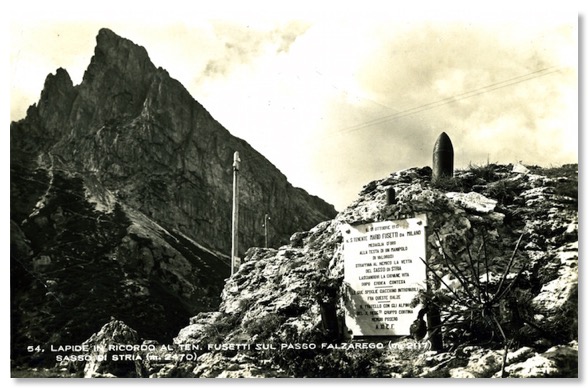
Here is a postcard, dated in 1954, that shows the main monument, the marble plaque on it (left hand face in the view), and some kind of metal device on the top of the obelisk. Behind and to the right is the other memorial, now minus the shell case:
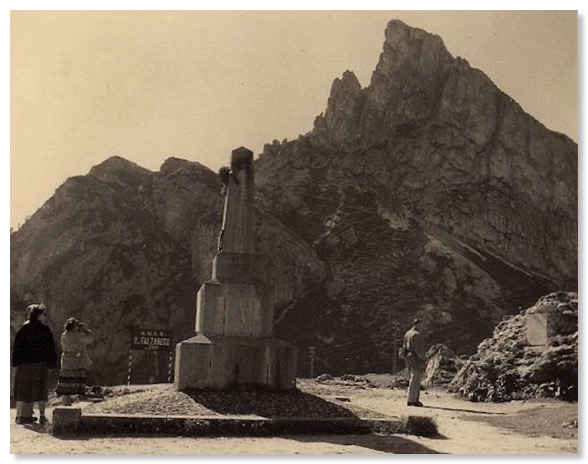
The memorial was still there in 1966, the postmarked date of this card:
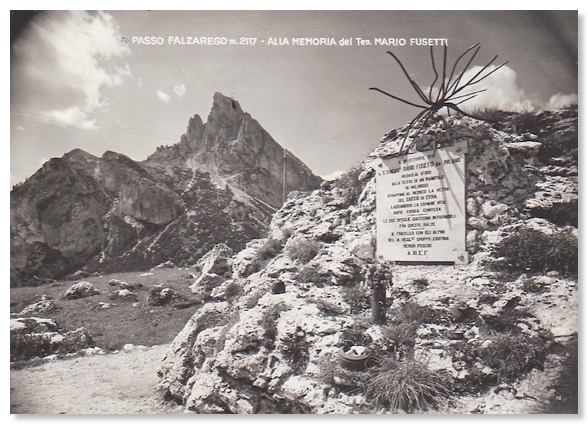
Nowadays that second white memorial has gone, but near to where it stood is this much newer limestone tablet which carries the very same words as the original, commemorating Lieutenant Mario Fusetti:
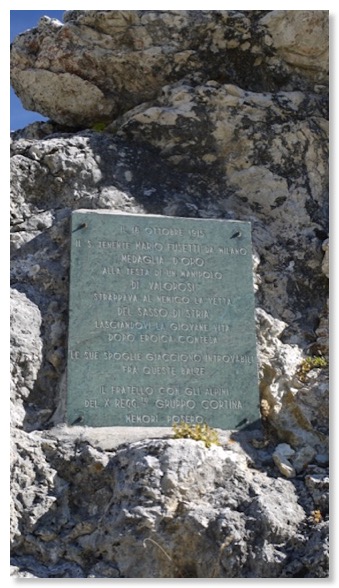
This postcard photograph shows the obelisk seen from slightly further to the east, possibly early in the 1920s. There seem to be no buildings on the opposite side of the road at the head of the pass:
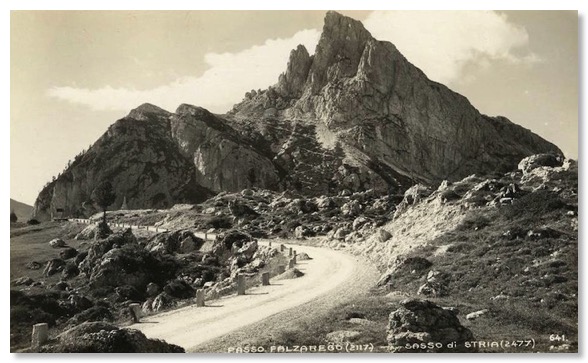
These buildings were well-established by the time that a local postcard photographer took this picture from a very similar spot, during the 1930s.
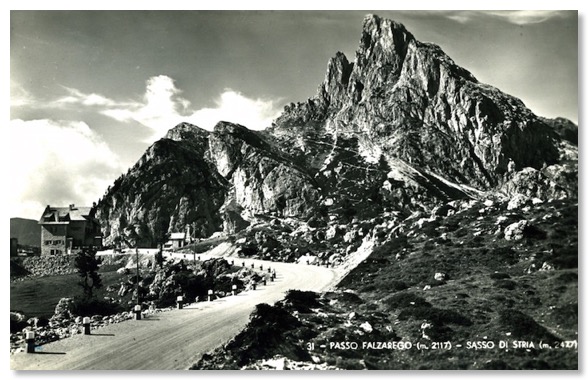
And in the 1950s:
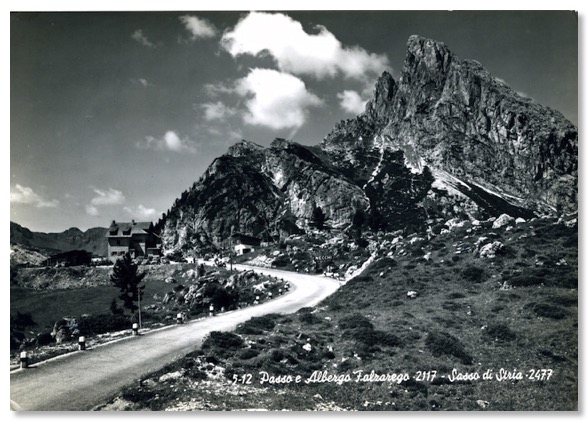
This is that same bend in the Road in September 2013. The war memorial is hidden by the building with the sloping roof:
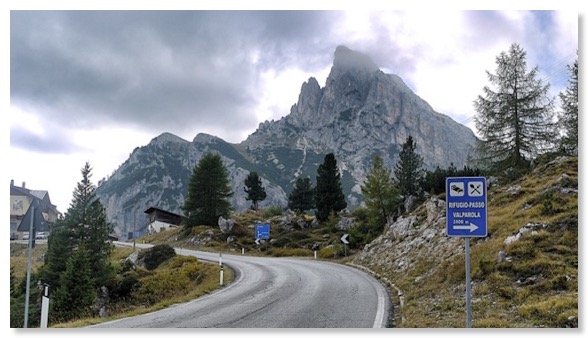
Here are three other views of the summit of the Falzarego Pass from the east, in which the Sasso de Stria is very prominent:
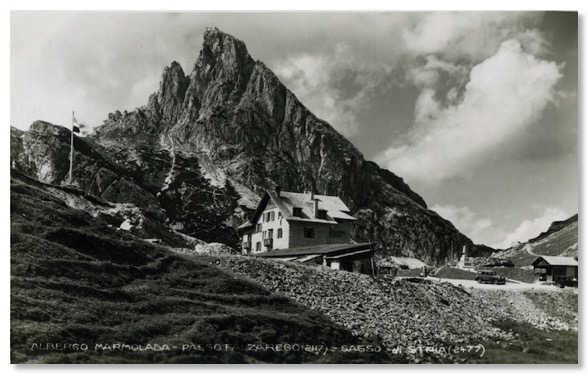
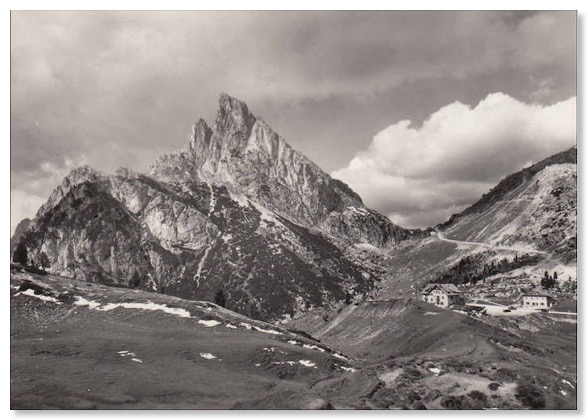
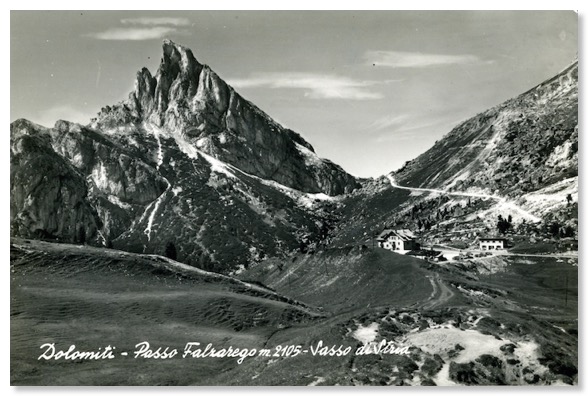
The junction of the road to the Valparola Pass has been considerably altered over time, as can be seen by several photographs I have collected on this site. The photo below is also the oldest I have in which the little chapel near to the road junction appears. The area of the summit of the Lagazuoi mountain that was blown away in WW1 mining operations is apparent from this postcard too. The summit was a strong-point held by Austrian troops, who were dislodged by a massive explosion, after many months of tunnelling through the mountain by Italian Alpini soldiers. It is those explosions that account for the pale area of rock near the summit, and for much of the two large white scree fans beneath these cliffs:
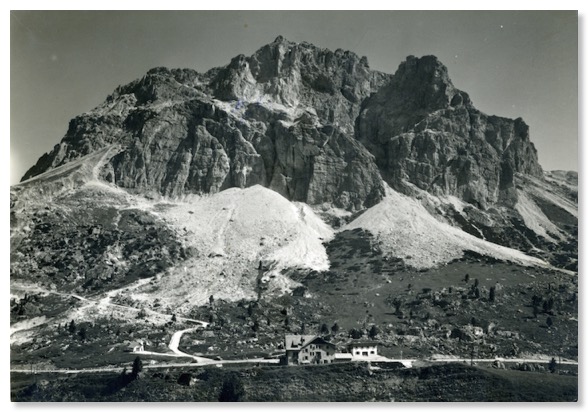
Based on the evidence of the buildings there, that postcard dates from no earlier than the very late 1950s, as the white building with the sloping roof has been built. The cable-car station has not yet arrived. This shot is slightly later, but still before the cable car was constructed:
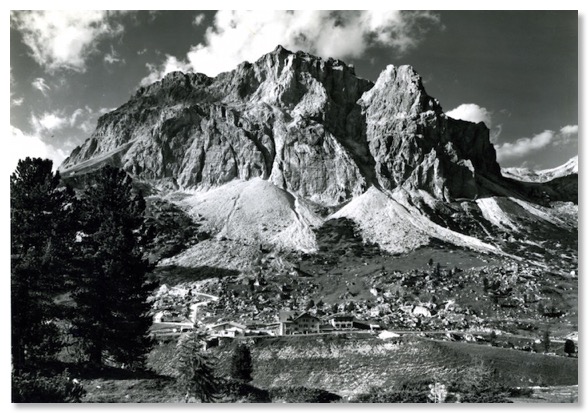
Here is my view of the same scene, in September 2013:
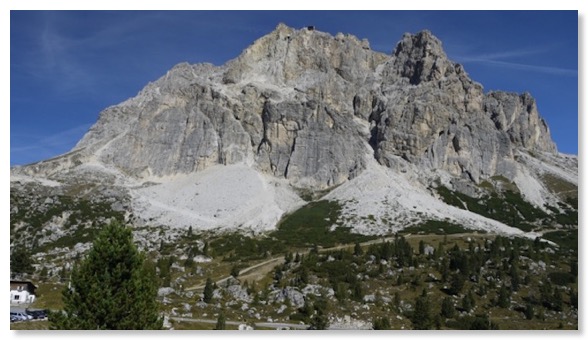
This view is earlier, on a postcard dated in August 1949:
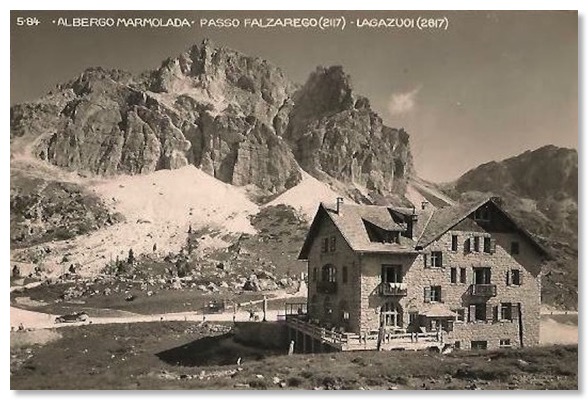
It is contemporary with this view, on a postcard, dated in 1947:
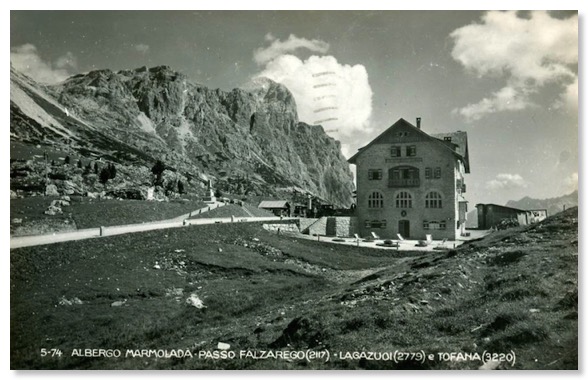
I would judge this view to be not later than the early 1960s:
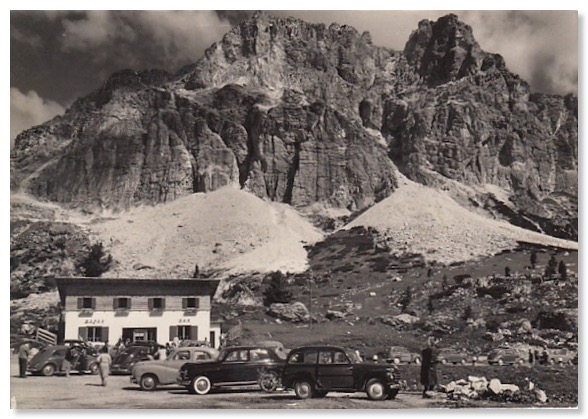
The cable car station was there by the late 1960s:
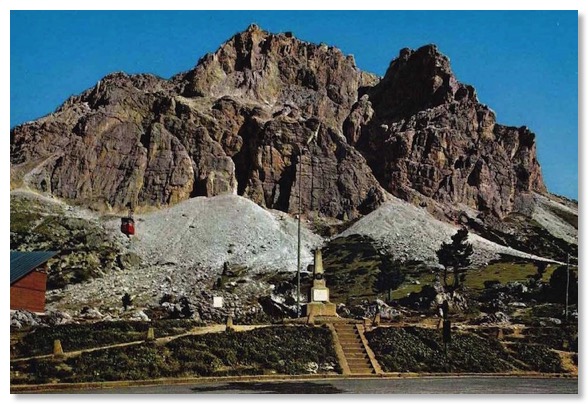
The cable-car has been a popular object for postcards ever since:
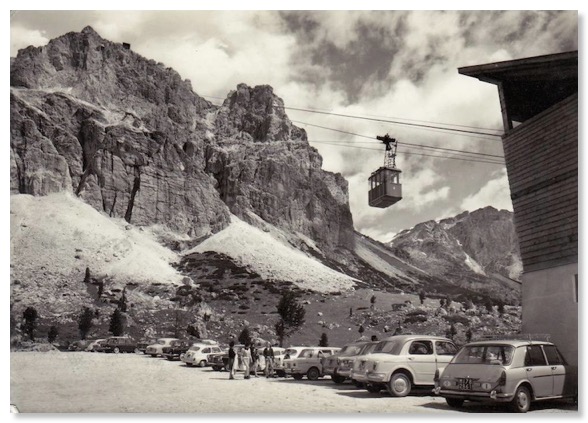
I later found this slightly earlier version of the same view, pre-dating the cable-car:
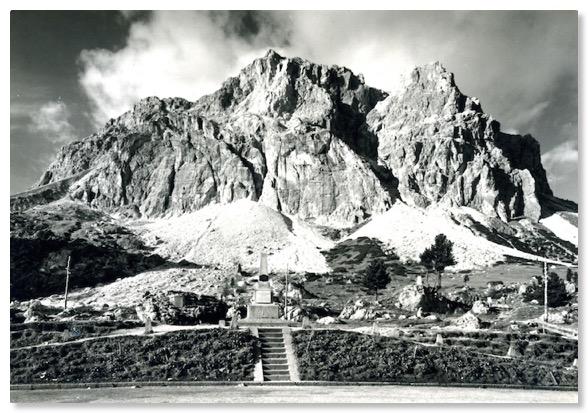
The early 1960s saw the height of building “clutter” at the head of the Falzarego pass. I have this hand-coloured picture, which shows many buildings, some of which have gone nowadays, but still no Falzarego-Lagazuoi cable car station:
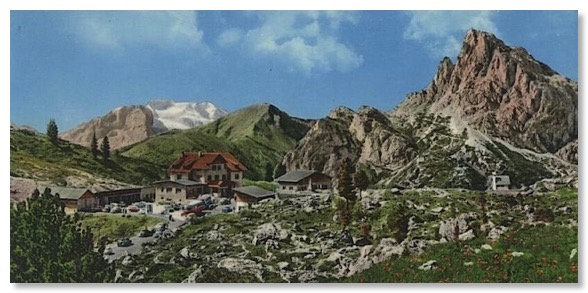
However, it is very obvious indeed in this early 1970s postcard shot:
